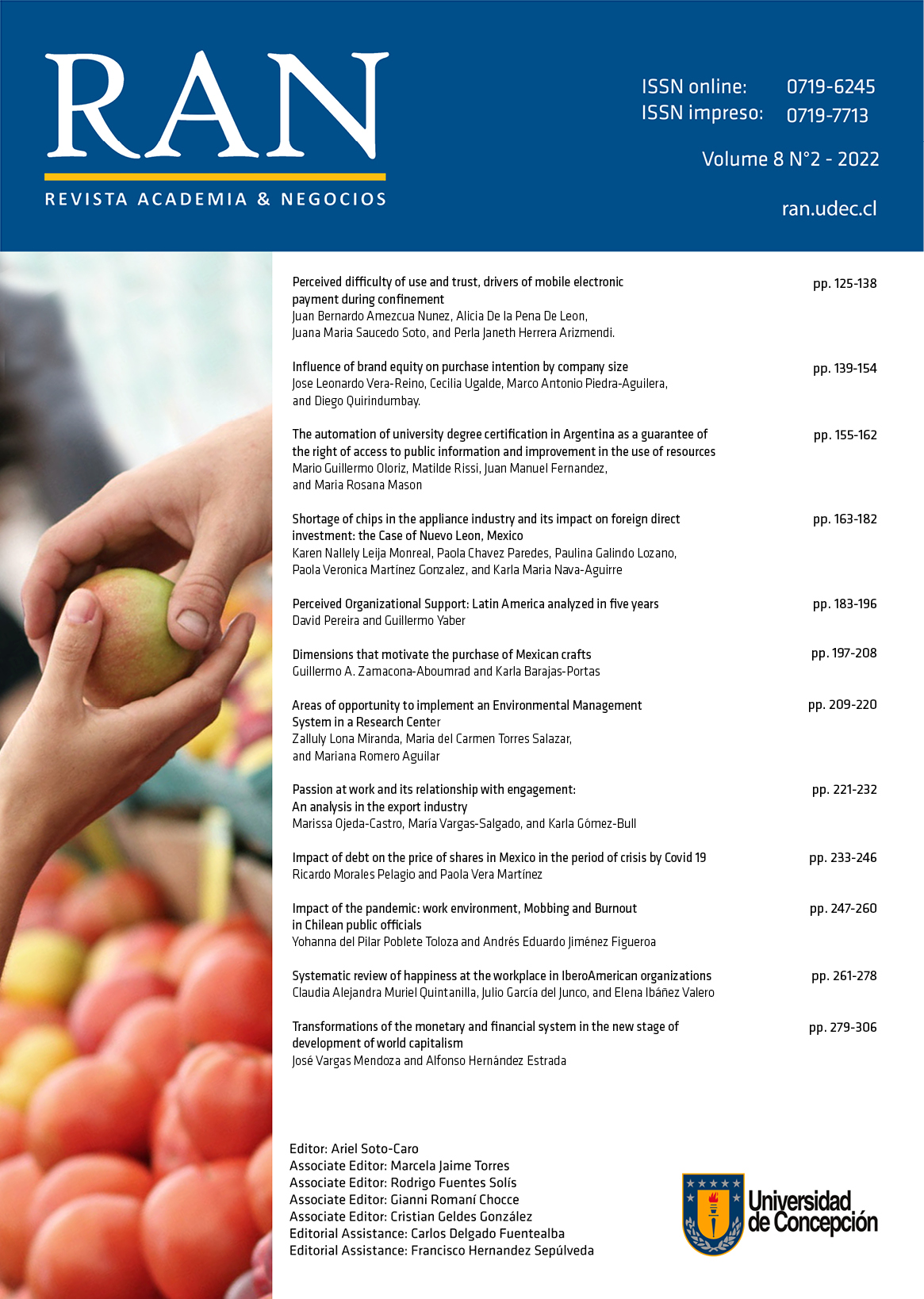Areas of opportunity to implement an Environmental Management System in a Research Center
DOI:
https://doi.org/10.29393/RAN8-13AOZM30013Keywords:
Organization, Higher Education Institutions, Environmental Management Systems, Environmental PerformanceAbstract
Purpose: Higher Education Institutions can respond to environmental problems with the support of Environmental Management Systems (EMS), a tool to reduce anthropogenic effects and optimize organizational processes.
Objective: The objective of the research was to generate strategies and recognize areas of opportunity for the proper operation of the EMS of the Autonomous University of the State of Morelos in Mexico in a specific Research Center.
Materials and Methods: The methodology used is mixed. A survey was constructed with items derived from the quality and environmental management principles referred to in the ISO standards, statistically validated using Cronbach's alpha coefficient. In addition, environmental performance was evaluated using an Identification Matrix and an Evaluation of Environmental Aspects, Impacts, and Risks.
Results: As a result, aspects that contribute to the non-appropriation of the EMS were identified, as well as the lack of importance of individual activities to create effects in the community analyzed. The need to create training plans specific to the requirements of the environmental spheres and to promote people participation is also highlighted.
Downloads
Published
How to Cite
Issue
Section
Copyright (c) 2022 Zalluly Lona Miranda, María del Carmen Torres Salazar, Mariana Romero Aguilar

This work is licensed under a Creative Commons Attribution 4.0 International License.























